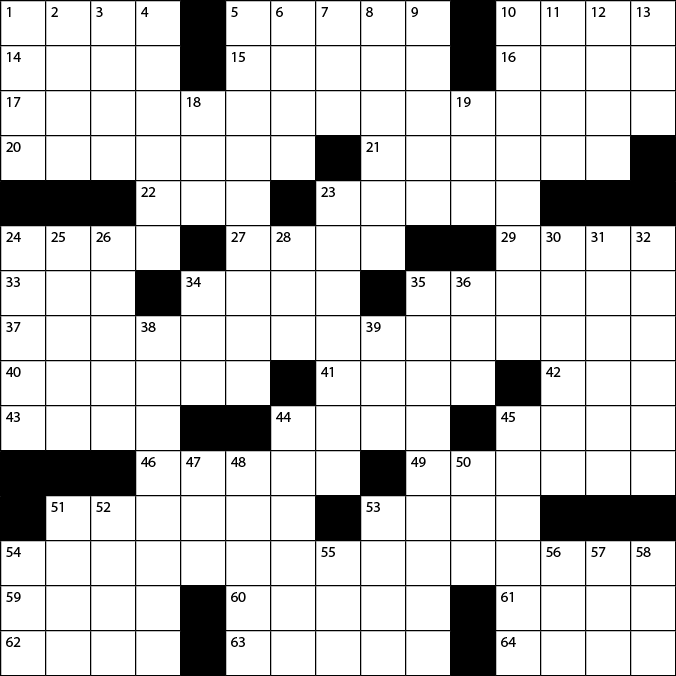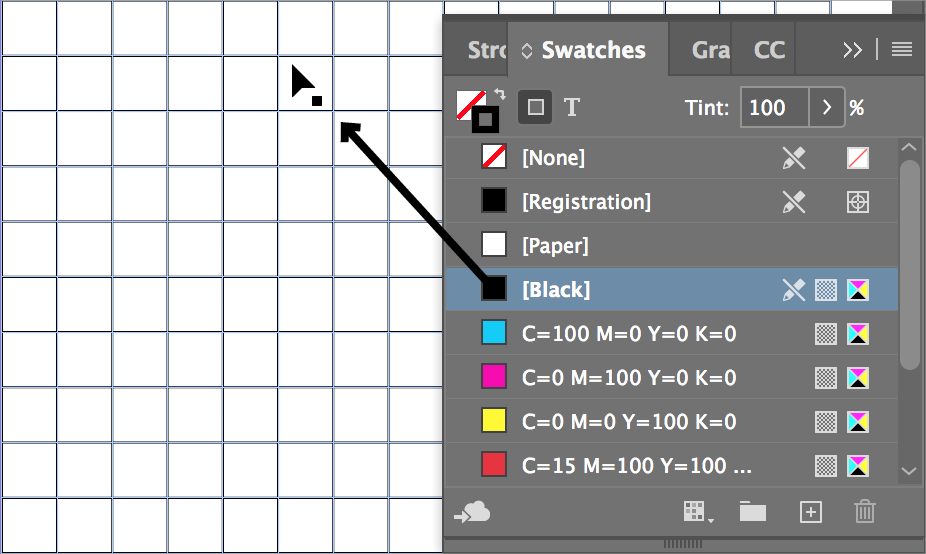Explore this detailed tutorial on using InDesign, focusing on creating tables and using color swatches, and practice your skills with a creative crossword puzzle exercise.
This exercise is excerpted from Noble Desktop’s past Adobe InDesign training materials and is compatible with InDesign updates through 2020. To learn current skills in InDesign, check out our InDesign Bootcamp and graphic design classes in NYC and live online.
Topics covered in this InDesign tutorial:
Tables, Color swatches
Exercise Preview

Exercise Overview
InDesign’s Table feature is a great way to easily make this crossword puzzle. This exercise also shows you a number of other cool tricks that should help make InDesign less “puzzling.”
Getting Started
-
Go into File > New > Document and set the following:
- Go to the Print tab and click once on the Letter (8.5 x 11 in) preset.
- To the right of Width, set Units to Picas.
- Uncheck Facing Pages if it isn’t already.
- Expand the Margins section if needed, and make all Margins 6p (or 1 in).
Click Create.
Setting Up the Table
- With the Type tool
 , create a text frame that fills the margin guides.
, create a text frame that fills the margin guides. - With the cursor sitting in the frame, go to Table > Insert Table.
- Make it 15 body rows by 15 columns with no header or footer rows.
- Click OK.
- The cursor should now be sitting in the first cell of the table. Let’s start by sizing the table. Go to Table > Select > Table.
- Open the Table panel by choosing Window > Type & Tables > Table.
-
In the Table panel, set the following (these options may also be in the Control panel if your screen is wide enough):
- For Row Height, choose Exactly and type in 1p6
-
Make the Column Width 1p6 as well.

-
Set all the Cell Insets to 0p2

-
With the table still selected, in the Control panel change the weight of the stroke to 0.5 pt (as shown below):

Deselect the table now by clicking off it or going to Edit > Deselect All.
Filling in the Black Boxes
Some cells need to be black. Refer to the Exercise Preview at the beginning of the exercise for which are to be colored. Let’s see two ways to fill table cells. Then you can use whichever you like best.
Open the Swatches panel and make sure it’s not covering the table.
-
As shown below, drag the [Black] swatch over onto the table cell you want to color and release your mouse.

This works nice for individual cells, but we need to color quite a few. There’s another way to do this that should be faster.
Using the Type tool
 , click and drag over adjacent cells that will all need to be filled.
, click and drag over adjacent cells that will all need to be filled.In the Swatches panel, make sure the Fill is active and click the [Black] swatch.
Finish coloring in the rest of the black cells using one or both of these methods.
Adding the Numbers
-
In the remaining white cells, enter the numbers as in the example at the beginning of this exercise.
TIP: Use the Arrow keys to quickly move between cells.
Select one of the numbers and make the text 6 pt Myriad Pro Regular.
Now let’s turn that into a paragraph style. With the number still selected, in the Paragraph Styles panel, click the New style button
 .
.Double–click the new style and name it Crossword Numbers.
Now let’s apply it to the whole table. Select the whole table by clicking and dragging over the cells or go to Table > Select > Table.
In the Paragraph Styles panel, click the Crossword Numbers style to apply it.
Wooohooo! Your crossword puzzle is now complete. Now you just need to create the clues. Save it as yourname-Crossword.

